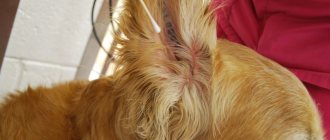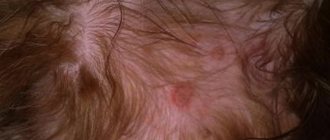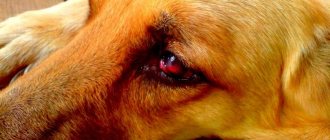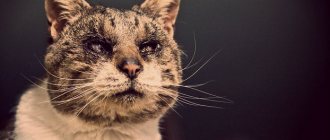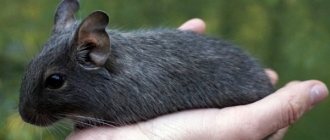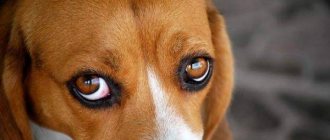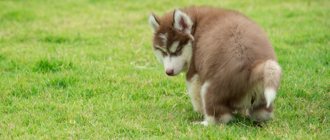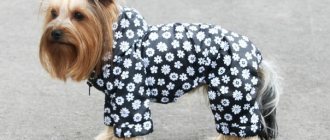Attempts to breed the breed
In America, where they love to experiment and are partial to all sorts of exotics, they managed to achieve the merle color in the pit bull breed. This took more than one decade. The merle gene slept for a long time. But hard work will always yield some fruit and this was achieved. Can you imagine the price of an Albanian pit bull? The American Pit Bull was crossed with the Catahoula (Leopard Dog). For what purposes, why? Just for fun? Probably not. Catahoula was used in boar and bear hunting. This is a very strong animal, in whose blood flows the blood of Indian dogs and the blood of the red wolf. The decision to cross such an animal with a pit bull was caused by the desire to obtain even more capable hunting dogs. The main color of this breed is merle. It causes a specific gene called merle or simply M.
Merle, which affects color, did not show itself for a very long time. And it was not possible to get what I wanted for a long time. This took more than a dozen years. And suddenly, it appeared... Leopard-colored pit bulls appeared. But they were not recognized as real pit bull terriers. Why? What is merle?
Answer
The Red Nose Pit Bull is a type of American Pit Bull Terrier. The animals were originally bred to work on cattle farms. Gradually, dogs began to be bred as a fighting breed. It is easy to find an impressive amount of information in the media about pit bull attacks on people. This served to create a negative reputation for the breed. Today, most people associate dogs with aggressive behavior and uncontrollability. There are a number of states where pit bulls have been outlawed.
The dog's behavior depends on upbringing and correct socialization. With the right approach, the dog will not show aggression, especially towards children. Reports of brutal attacks primarily relate to dogs bred as fighting dogs. Under harsh training conditions, a dog of any breed will become aggressive.
Characteristics
The peculiarity of the breed lies in its diversity: some pit bulls look more like bulldogs, others more like terriers. But without exception, all representatives are agile, stocky and muscular. Pit bull terriers are famous for their perfect immunity to pain and have remarkable strength. The face of a pit bull is one with strong jaws that can actually deliver a deadly bite.
The main purpose of the American Pit Bull Terrier, for which it was created, is to participate in dog fights and win them. The working characteristics of the breed are perfect because their nervous system is strong, as is their physique. If a dog encounters an opponent twice as strong and massive as it is, it will potentially win. Therefore, the Pit Bull Terrier is aggressive, resilient, able to fight and bite thanks to its fighting spirit.
The standard prescribes the pit bull to have an athletic and stocky build. Its height is on average 45 cm, with females not much shorter than males. Weight reaches a maximum of 25 kg, and thanks to its proportional physique, the dog looks well-rounded and harmonious. Its body is compact, its chest is quite deep, and its ribs are flexible. In the USA, the standard allows for the existence of three types of dogs:
- Proportionally folded.
- The advantage is towards the characteristics of the terrier.
- Predominance of bulldog qualities.
A purebred pit bull terrier has a smooth and hard coat that fits tightly to the body, somewhat like stubble. Ideal fighters should have a shiny coat - this indicates preparedness and good health. There are color variations:
- Brindle.
- Red-brown.
- Particolor.
- Spotted.
- Ginger.
- Chocolate.
- Blue.
- Rednose.
In the pictures, the blue and black dog looks very unusual. It is undesirable if the dog is completely white or black.
Existence
If we talk specifically about the Albanian Pitbull breed, it does not exist. There are no breed standards; it is not recognized by any of the official canine organizations. But there are representatives of the American Pit Bull Terrier breed with a rare spotted color. These are the almost legendary “Albanian pit bulls”.
It is incorrect to talk about the breed in this way. This is just a variation that they are trying to bring into the framework of a completely different breed, and so far - unsuccessfully. Nevertheless, representatives with this color exist; they are bred by selection by American amateurs.
In fact, dogs with this color are genetic errors and a kind of “marriage”. Their color is due to the introduction of the M gene into the genotype, which is responsible for the dilution of eumelanin, which affects many other features of the body. Dog experts still do not recognize the existence of a “breed,” but they do acknowledge the presence of these “genetically modified dogs.”
The introduction of the gene and the appearance of the merle color occurred after crossing a pit bull terrier with a Catahoula leopard dog. Selection was carried out with the aim of improving the hunting qualities inherent in both breeds and obtaining an “ideal hunter” who is not afraid of even the largest prey. The appearance of the color turned out to be an accident, and the subsequent breeding of similar dogs was purposeful.
IMPORTANT! Merle coloring should not be confused with regular mottled pattern.
Merle color "Regular" spotting
Along with the unusual color and its breeding came genetic problems, including mental disorders. The resulting specimens could be distinguished by their aggressiveness both towards the prey and towards the hunter, without making distinctions.
In addition, defective puppies began to be born with the absence of ears, eyes, disturbances in the sensory organs, etc. An ethical problem has arisen in breeding a breed - how ethical is it to force animals to suffer their desire to have a pet of an unusual color.
Standard colors with photos
Since more than one canine federation still does not recognize this breed, the pit bull does not have strict standards for appearance. Therefore, each color from the general variety (except marble) is considered standard.
The merle color is obtained thanks to the M gene, bred by artificial selection of different breeds to obtain a new color.
Pitbull colors can be roughly divided into three categories:
- brindle,
- solid,
- spotted.
Merle
The color appeared relatively recently and immediately caused a lot of disagreement among breed connoisseurs. Merle is a diluent gene. By diluting the paint gene, it makes it possible to synthesize colors that are not typical for this breed. But the problem is that pigment cells are created along with the same set of cells from which the nervous system develops. Therefore, along with the updated color, the dog can also receive:
- eye development defect;
- complete deafness;
- the birth of offspring premature, malformed or sterile;
- other neurological, immune and mental disorders.
The peculiarity of the color is the unevenly colored coat in the form of less or darker areas of the same color. Crossing two pets with this gene is strictly prohibited. People are not just born with such a gene.
If a dog has a color defect, it means there are problems with the nervous system.
brindle
It occurs quite often. Is a natural color. It consists of stripes that cover the dog’s entire body from bottom to top, or only spots, or, on the contrary, everything except spots.
Black
It is often confused with blue and vice versa. This happens due to the person’s inexperience or the weak intensity of the black color. People have ambivalent attitudes towards this color: some do not accept it as the standard color of this breed, others say that black pit bulls are more prone to aggression and less adequate than others. This is mistake. The color of the coat has nothing to do with the aggressiveness of the animal. Black pit bulls, although particularly fearsome in appearance, are some of the most loving dogs in the world. This is probably why this color is especially popular among dog breeders from the USA.
Blue
Another name is blue. One of the rarest colors of this breed. But the most popular among those who want to buy a pit bull. Great demand has led to the fact that unscrupulous breeders, seeing the client’s incompetence, sell him a black dog under the guise of the desired blue color.
White
Entirely, with the exception of the muzzle, white. There are varieties of color that are lighter or, conversely, closer to gray. White is also possible in the form of spots and even as a third color.
Chocolate
There are five varieties:
- chocolate,
- dark chocolate,
- light chocolate (cocoa),
- chocolate white,
- chocolate and tan.
Leopard
Carriers of this color are more often called spotted Albanian pit bulls.
This is the same American pit bull terrier, but with a leopard color. This is the impact of Merle.
Of course, the color is not accepted by the official standard and, like any marble color, it is unsafe. This fact does not prevent such dogs from being actively bred over the hill, because they are in demand there.
Such breeds should not exist - this is the opinion of most dog handlers and zoologists.
Having no analogues, the only specimen of the Albanian pit bull is considered to be a dog named Titus. He was bred and raised in the USA. It has the shape of a pit bull and the coloring of a cheetah.
Grey
In other words, fawn. The color is like white sand. It can also be compared to the tan and red coloration. If you arrange these colors in order of brightness, it will represent the following:
- pale yellow,
- ginger,
- red.
teak
Teak refers to small spots (specks) on the white areas of a pet's coat. The Pitbull's base color (no white) is mottled. However, it will not be possible to see it, since it is visible only on white fur. Examples include Dalmatians or English Setters - they also have markings.
Teak (mottling) and Merle are different colors. It's easy to confuse them.
Breed standard (appearance)
The pit bull dog has a rather vague description. But the animal’s exterior should not go beyond the following framework:
- Head. Medium in size and rectangular in shape, flat on top, widening towards the forehead.
- Cheeks. Fleshy, convex, without hanging chins.
- Muzzle. Massive, has approximately equal length and width, and may have a clear and smooth transition from the forehead to the nose.
- Bite. Standard scissor-shaped, jaws developed, powerful.
- Ears. Docked or left intact, raised high. Uncropped ones have drooping tips.
- Eyes. Slightly elongated, oval in shape, shallow set. Eyes can be any color, from light blue to dark brown.
- Nose. With a wide lobe, round, color from black to light pink, nostrils open.
- Shoulder blades. Well-muscled, widely spaced.
- Neck. Powerful, lean with developed muscles.
- Tail. Short, low, tapering towards the end, not curled.
- Stomach. Fit, skin of any color, almost bald.
- Breast. Medium size, with developed muscles.
- Hips. Powerful, with lean muscles.
- Paws. Medium, wide top, straight elbows.
- Wool. Short, guarded, tightly adjacent to the dog's skin.
- Color. Various from marbled, brindle to white with black spots. The standard does not provide for any deviations; only merle is prohibited.
- Weight. Depends on the line to which the pit bull terrier belongs, from 11 to 36 kg. Standard male up to 28 kg, female up to 19 kg.
- Height at withers. Males are from 46 to 53 cm, females are more graceful and reach from 43 to 50 cm.
What is merle?
This is an exotic color variation that is inherent in the Albanian pit bull, despite the fact that it is not given to him by nature. Do not confuse with speckled print - these are completely different things. The latter has dark spots scattered against a light background.
How does it manifest?
The M or Merle gene increases the number of white spots and affects brown and black colors. It occurs when, at the genetic level, chromosomes carry different forms of genetic material. This may be the result of a mutation. Then we are dealing with spotty coloring of the fur coat. The basic tone remains the same, only the shades of the spots change.
Why is it dangerous?
Cell pigmentation and the formation of nerve fibers occur during the embryonic period, so if the color deviates from the norm, problems may occur in systems and organs. Due to this risk, a pet with a similar genotype is not suitable for reproducing offspring. He is only suitable as a companion.
Appearance
American Pit Bull Terriers are not recognized by the world's cynological federations. This means that their appearance does not have strict standards. Any colors are acceptable, with the exception of marble. Colors are divided into brindle, spotted and solid. Representatives of the latter are black pit bulls.
The black color of pit bull terriers is not very intense, so some people confuse it with blue. This color has both connoisseurs and opponents. Some dog breeders believe that it is simply a deviation from the standard, others insist that its owners are more aggressive. This statement is not confirmed by anything, since the color of the coat does not affect the character.
The average size of individuals is from 44 to 49 centimeters, females are usually smaller than males. The coat is quite short and smooth. The torso is very powerful and muscular. Oval eyes are not set too deep and can have shades from soft blue to yellow or rich brown. The jaws are very strong for a dog; a characteristic feature is that it is extremely difficult to unclench them if the dog gets into a fight.
Varieties of pit bull colors: any color is available - no restrictions
Representatives of the pit bull breed can have any eyeliner and iris, nose and ear color. But at exhibitions, experts take into account the harmonious color of individuals as a whole.
Current types of pigmentation in pit bulls:
- solid;
- brindle;
- spotted
Breed standards suggest the following coat color options:
- teak;
- beige;
- gray (blue);
- leopard print;
- chocolate;
- white;
- black;
- brindle;
- tricolor;
- merle.
Helpful information! In Moscow, dogs of rare colors are sold for up to 100,000 rubles. Pit bulls of a familiar, commonly found color (for example, brindle) can be purchased much cheaper - for 20,000 rubles.
Pitbull standard color
Dog handlers from the International Organization (FCI), despite the fact that pit bulls are the direct ancestors of the American Staffordshire Terrier, do not recognize them as a separate breed. Therefore, there are no clear standards for the color of these dogs.
Nowadays there are many colors of pitbull dogs.
Merle
The merle color appeared not so long ago, provoking controversy and criticism from pit bull fans.
Good to know! Merle is a dilution gene. By diluting color genes, it promotes the synthesis of colors uncharacteristic for pit bulls. The main danger is that the pigment cells are formed together with the same set of cells that form the pit bull's nervous system.
Merle carries the following health risks for pit bull dogs:
- eye diseases;
- hearing loss;
- infertility;
- congenital deformities;
- irreversible immune and mental diseases.
It is prohibited to mate pit bulls that are carriers of this gene. In the natural environment, individuals of such a rare chic color cannot be born.
Black
Black as night, graceful as a panther, beautiful as a devil - all this directly relates to the “tar” pit bull “Prague”. This dog has an incredibly mystical appearance. Charcoal pit bulls with turquoise eyes look especially attractive.
Black “vanta” pit bulls evoke a feeling of fear in people. Experts have different opinions on this issue: some claim that black color is standard for the breed, others that black individuals are prone to aggression and inappropriate behavior.
You should know! Black color does not in any way affect the level of aggressiveness of the animal. It only gives this powerful dog a more intimidating look, but nothing more. Black pit bulls are especially popular in the USA.
Black color can have a number of basic shades:
- Jet black. This color can be combined with a white chest; small markings in the form of a white “tie” or white fingertips are allowed.
- Black and white. Assumes the presence of white markings. Their volume should not occupy more than 50% of the surface of the dog’s body.
- Black and tan. Against the background of black fur there are markings in the form of tan marks of red, reddish or light brown color. Location of markings: above the eyes, on the muzzle, on the chest, as well as at the bottom of the paws, under the tail.
- Tricolor. This shade is similar to black and tan, but the dog also has white markings.
- Dark grey. This color is similar to black, but differs from it in a more/less pronounced bluish tint.
- pure chocolate;
- dark brown chocolate;
- milk chocolate;
- chocolate white;
- chocolate and tan.
brindle
Brindle coat color is the most common natural color of Pit Bulls. This coloration implies the presence of stripes abundantly covering the dog’s body. Also, these may not be stripes, but spots.
Many dog lovers buy a pit bull with this coat - this is a natural color that guarantees the dog’s health.
Beige
Beige wool looks impressive on powerful representatives of the pit bull breed. This color is recognized by breeders all over the world. This pit bull color can be either solid or with various splashes of white.
The breed allows various color variations.
White
Albinos are often found among white individuals. The concept of albinism implies a lack of color pigment. These pitbull dogs have two characteristic features: these dogs are blue-eyed and have light noses.
These individuals, despite their unique appearance, are recognized and therefore are not allowed for breeding.
There are often different color variations: from completely snow-white to grayish. The presence of a third color is possible - in the form of spots.
Chocolate
Cynologists distinguish five variants of chocolate pit bull color:
Leopard
Leopard-colored individuals are referred to by cynologists as “spotted Albanian pit bulls.” Outwardly, they look like American pit bulls, but have a leopard coloring.
Such incredible colors of pit bulls are obtained under the influence of the “merle” gene. Therefore, this color is not included in the breed standard, being unsafe for the health of an adult dog. But this does not prevent breeders from actively breeding leopard-colored pit bulls, since they are in great demand among buyers.
Helpful information! Experts believe that such dogs should not exist. A unique representative of the “Albanian” pit bull is Titus. This is the name of the dog, which was specially bred in the USA: he has the appearance of a pit bull, and the color of his coat is like that of a leopard.
Grey
The gray color also has another name - blue, fawn or ash. It is compared to the coloration of red and red. If these colors are arranged on the saturation scale, a sequence of this kind is obtained:
- pale yellow;
- red (orange);
- red.
The active demand for pit bull puppies of a beautiful blue color has led to a situation where dishonest breeders, realizing the ignorance of their customers, sell them black puppies under the guise of blue ones.
Tricolor
Tricolor pit bulls are considered rare. The triple color combination gives many different color variations: this is the classic three-color combination (black-white-red), as well as tri-color blue and chocolate.
The breed allows all these color combinations; they are recognized by breeders all over the world.
teak
By ticking, cynologists mean that a pit bull has small speck-like spots located on areas of white fur. The main color of such individuals (without white) is mottled.
But you won’t be able to see it: it becomes noticeable only against the background of white fur - for example, how it looks in Dalmatian dogs or representatives of the English Setter breed.
Attention! The teak (speckled) color of a pit bull and the merle color can easily be confused by a person who is not a specialist dog handler.
Distinctive features
Expert opinion
Kozhevin Semyon Kirillovich
Expert dog handler.
Before you get a Frenchie, you need to take seriously the fact that this is not just a funny indoor bulldog peeing in a litter box. Firstly, despite his diminutive size, he still needs constant walks filled with vivid impressions and opportunities to throw out his vigorous energy.
Secondly, Frenchies simply love to dominate, and if the owner often follows the pet’s lead, the bulldog’s character and psyche are distorted very quickly.
Thirdly, you need to immediately realize that the “Frenchies” are quite expensive to feed and treat.
Dimensions and other features of the Blue Bulldog:
- Dog height: male – 30-35 cm, female – 25-30 cm;
- Dog weight: male – 10-15 kg, female – 8-12 kg;
- Lifespan: 10-15 years;
Peculiarities of color: dogs with the D gene (weakened black color gene) have a rare blue color. Such a gene may also be present in a standard-colored Frenchie, but with further breeding there is a high probability of “blue” puppies appearing in his offspring.
Body type: strong, muscular.
The large head has a square outline and a darker color. Due to the structural features of the head and its massiveness, Frenchies cannot swim.
IMPORTANT!
The presence of an upturned flat nose and a flattened muzzle leads to the fact that bulldogs have difficulty breathing; they do not tolerate heat and prolonged exercise.
The tail is naturally docked. French leather has many folds that require special care to avoid specific diseases. But his short coat requires minimal grooming.
The opinion of dog handlers
The question of the existence of the Albanian pit bull has been a subject of debate among many dog handlers for a long time. Most are of the opinion that this is not a separate breed as such, but just a color variation of the regular American Pitbull. Rare, but found and not included in the breed.
Cynological associations are categorically against the breeding of this breed. The problem lies in the genetic characteristics of these dogs, their unstable psyche. In addition, it is believed that there is no use in this variation of the breed other than decorativeness.
There is also an opinion that representatives of the breed with this color are superior to their fellow tribesmen in hunting abilities. However, this is the case when there are much more disadvantages in such breeding than advantages.
Appearance Standard
The American Pitbull breed has not been officially recognized by the cynological organization. Representatives can vary greatly in appearance. This fact gave rise to doubts about the existence of uniform standards. In fact, the main quality of a purebred dog is the absence of the aggression gene. Today, adba and ukc, organizations for the registration of pit bull terriers, have put forward two versions of standards.
| Organization | Options | Characteristic |
|
|
|
When determining breed standards, the American Dog Breeders Association pays more attention to the fighting qualities of the animal. In the second case, the emphasis in the description of the breed is placed in favor of its show relative - the Staffordshire Terrier and takes a less careful look at the physical characteristics
Both organizations pay attention to the character and temperament of the animal.
The meaning of pit bull tattoos for men and women
Tattoos have long become a common way of self-expression. With the help of tattoos, people strive to emphasize their belonging to a certain group or ideas, vision of the world or character traits. A tattoo is a reflection of how a person perceives beauty and art. Some designs carry a special meaning that the person getting the tattoo may not be aware of. To avoid getting into an awkward situation, you should find out in advance what a particular drawing can symbolize.
This article will reveal the meaning of the pit bull tattoo.
General meaning of the picture
Most often, a pit bull terrier tattoo is a symbol of aggression, strength, cruelty, loyalty and the ability to achieve a goal. First of all, this perception is due to the fact that pit bulls are fighting dogs, aggressive, and in the absence of proper training can be deadly.
But a “pit bull” tattoo can have a different meaning – a memory of a deceased pet of this breed or an expression of love for your pet. After all, dogs of this breed are devoted and faithful defenders of their owner.
Men often get this design, wanting to emphasize their brutality and strength, but sometimes girls also get tattoos of a fighting dog.
The meaning of a pit bull tattoo for men
A man who gets a tattoo of a fighting dog, as a rule, seeks to emphasize his strength and fighting qualities. Such a person may have aggressive behavior and attitude towards others. Often, members of street gangs or fan groups decorate their bodies with tattoos of pit bull terriers to emphasize cruelty and to intimidate competitors.
In cinema, pit bull tattoos highlight a character's radical and antisocial views, such as American History X and Edward Norton's character.
To understand the meaning of a tattoo with a fighting dog, you need to pay attention to how it is depicted. Drawings where dogs are in motion, with an emphasized aggressive grin or gaze, surrounded by fire or with a spiked collar, clearly indicate the aggression and toughness of the tattoo bearer
People who want to perpetuate the memory of a deceased dog choose static images (portraits) indicating the dog's name and sometimes the date of death.
The location of the tattoo can tell about the character of the owner. If a “pit bull” tattoo is on the shoulder, the meaning is the cool character of the owner, his aggressiveness. The pattern made on the calf symbolizes victory and the ability to go all the way towards your goal. On the chest, such a tattoo emphasizes the loyalty and courage of the owner, rather speaks of his kindness. A pit bull terrier stuffed in the elbow area is a symbol of secrecy.
The meaning of pit bull tattoos for girls
Despite the fact that tattoos with a fighting dog are done by male representatives, there are also girls with similar designs on their bodies. Typically, representatives of the fair half of humanity choose cute “cartoon” images of dogs or portraits of their favorite pets, decorated with flowers; they do not carry aggression. The meaning of a pitbull tattoo on a girl is her cheerful character and love for animals.
Zonovsky meaning of a tattoo with a pit bull
In the area, tattoos with dogs have a negative meaning. The dog symbolizes the traitor-informer. Prisoners often get tattoos with wolves, which speak of independence and will, the ability to unite and lead people. Therefore, we can conclude that the meaning of the “pit bull” tattoo on the zone is negative.
Finally
The meaning of a pit bull tattoo is most often aggression, courage and strength. It speaks of the owner’s masculinity and toughness, his unbending character.
This is not necessarily a person with criminal inclinations, he could be an athlete involved in martial arts or boxing, and his tattoo is a symbol of strength and the desire to win.
What dog breeds have red eyes?
In nature, there is only one case when red white membranes of the eye are a physiological norm. Albinos have no coloring pigment and the capillaries in the eyes are visible through the depigmented integumentary tissues. In all other cases, various reasons lead to redness, which have varying degrees of danger for the animal.
Additionally, some dog breeds are predisposed to keratoconjunctivitis sicca or red eye syndrome. Most often, red whites of the eyes due to insufficient production of tear fluid are found in Chinese Crested Dogs, Lhasa Apso, Shih Tzu, Yorkshire Terriers, Pekingese, Cocker Spaniels, Brussels Griffons, Pugs, Bulldogs, as well as mixed breeds of these breeds. But this is not the norm, it’s just that the frequency of occurrence of the pathology makes it expected in representatives of these breeds.
Reddening of the whites in dogs can provoke stress, which is caused by fights, punishment, suppressed aggression and other factors that disrupt the psycho-emotional state of the animal. In this case, it is enough to calm and caress the dog, and the redness will go away on its own.
Hyperemia of the mucous membranes and whites of the eyes can be a consequence of hyperthermia - overheating of the animal. In this case, the owner should pay attention to other symptoms - shortness of breath, loss of coordination, increased body temperature, and the urge to vomit.
A normal reaction to wind and dust is drying of the mucous membrane of the eyes and redness. Once you rinse your pet’s eyes and drip “artificial tears,” the irritation will go away and the whites will return to their natural appearance.
Redness of the whites of the eyes can be a symptom of a systemic pathology or a separate ophthalmological disease. It is impossible to independently assess the degree of risk to a dog's vision from red eye syndrome. Every large clinic has a veterinary ophthalmologist who will make the correct diagnosis and prescribe a course of treatment.
Read about all eye diseases in dogs.
What to name a puppy
Before coming up with a nickname for a puppy, it is better to observe him. The baby's behavior will certainly tell you which name will suit him. In addition, if the dog is purebred, the breeder will come up with a name for the puppy.
The owner, in the process of communication, will find a diminutive form of the already given name.
Possible nicknames for pit bull boys:
- Bandit, Band, Boss;
- Varn;
- Gray;
- Don;
- Keeler, Cor;
- Lord;
- Mason;
- North;
- Royce, Roy;
- Ted;
- Phil;
- Hugo-Boss, Hayes, Khan;
- Caesar;
- Chaz, Chuck;
- Cher.
Possible nicknames for female pit bulls:
- Arana;
- Bella;
- Varana, Vaina, Visa;
- Hera;
- Dora, Deya;
- Dawn, Xena;
- Bark;
- Lana, Lisa, Lika, Lucien, Laura, Luna;
- Mira;
- Rose;
- Tara;
- Tsera, Tsuma;
- Sheiri;
- Eira.
Pit bulls are excellent dogs, easy to train, loyal and reliable. In the person of the owner, they definitely need a clear leader with a strong hand, but at the same time knowing how not to demonstrate his own anger and aggression.
If a pit bull shows even the slightest bit of weakness or fear, it will dominate and become uncontrollable. Then there will be one more victim and one more terrible legend.
Basic rules of care
White pit bulls are bathed no more than twice a month. The dog's coat should be brushed once a week with a brush or mitt for cleaning short-haired dogs.
It is recommended to inspect your pet’s eyes, ears and mouth daily, and clean them as they become dirty..
To clean the ears, eyes and teeth of white pit bulls, it is advisable to use special products, for example, in the form of lotions or drops, as well as toothpaste intended for dogs.
NOTE!
Claw trimming should be done using nail clippers, but this should only be done if the pit bull cannot grind its claws down on its own during walks.
In which countries is it prohibited?
American pit bulls have gained fame as such dangerous dogs that all types and types of this breed have been banned from being kept in the following countries:
- almost all European countries;
- Canada (provinces of Ontario and Manitoba);
- USA.
Pit bulls are not officially prohibited in Russia, but at the legislative level they are recognized as a dangerous breed. In 2014, draft Federal Law No. 633848-6 “On keeping dogs in the Russian Federation” was created, which states that in order to keep and breed dogs recognized as a dangerous breed, citizens are required to obtain a license.
To do this, you will need to document your adequacy, training skills, knowledge in the field of care and maintenance of dogs of the declared breed, and the consent of the citizens around him.
List of documents for obtaining a license:
- statement;
- the applicant's identity card (passport);
- a certificate from a psychiatrist about mental health;
- written consent of neighbors (certified by their signatures);
- written permission of the self-government body.
But this bill is under consideration in the State Duma. And while there is no current law, no one can prohibit keeping a pit bull.
As Russian health statistics show, in 2021, out of 569 cases of attacks by domestic dogs, in 217 cases these were pit bulls. And in half of them the victims were children. A disappointing indicator of human irresponsibility...
Albanian pitbull for sale
Those who decide to purchase an Albanian pit bull should understand that the breed is difficult to find. At the moment there is not a single breeder of these dogs in Russia. Since the animals are not officially registered, they cannot be bred everywhere. This is where problems arise with buying a real spotted pit bull. Another feature is the price. The cost of a puppy is calculated in millions of rubles. In addition to the cost of purchasing a pet, it is necessary to take into account transportation from America.
Having studied the information about the Albanian pit bull, it becomes clear why there are so many conflicting opinions around this breed. Spotted animals really exist, although many dog handlers do not perceive this type of dog. Imperfections in breeding work and genetic modifications affect the condition of dogs, so it is impossible to guess how the animal will grow up. Due to their rarity and high cost, it is believed that these dogs are only available to billionaires.
*Prices are current as of November 2021.
The Albanian pit bull is a dog breed not recognized by the official canine federation. A large number of animals, in the history of their formation, were not recognized as CF for a long time, constant work is being carried out with the need to breed miniature, unusual colors and new forms, for example, Chinese crested dogs were bred, which did not immediately receive recognition.
The Albanian Pit is currently in its infancy, and perhaps in the near future it will exist as a separate breed. Although this is unlikely for certain reasons.
Many photographs of intervention resources located in the vast expanses are misleading, because it is not easy to immediately understand whether it is true. Many have seen a pit bull that looks like a wild leopard; its unusual color gives it a bright appearance and an unusual appearance.
Pit bull grooming and hygiene
Pit bulls are considered unpretentious dogs that do not require complex care. The main thing is to monitor the condition of your ears: they should always be clean and dry. The ears must be treated once a week, and the pet must also be combed.
There is no clear regimen for bathing a pit bull: washing occurs as needed. If your dog does not wear his nails down on the asphalt naturally, they need to be trimmed.
A pit bull requires increased activity, so you need to walk it at least twice a day. This breed of dog is focused on active games and frequent training.
Useful tips from experts on caring for a representative of the pit bull breed:
- Combing. Since the pit bull has short hair, it does not require special attention: you just need to comb it once a week. When your pit bull is actively shedding, you should use a furminator designed for short-haired individuals.
- Trimming claws. Representatives of the pit bull breed should trim their nails as they grow back. If your pit bull's claws wear down on the asphalt, trimming is not necessary.
- Caring for teeth (gums). A pit bull needs to check its mouth daily to monitor for odor, inflammation, and food debris. From puppyhood, a pit bull should be taught to brush its teeth and gums with a special soft brush.
- Facial hygiene. It is necessary to monitor the condition of your pet's eyes daily, removing discharge with a damp swab. Pitbull ears need special care: they need to be checked for the presence of wax deposits and inflammation.
- Checking the anal area. The pit bull requires regular monitoring of the area under the tail for dirt and redness: representatives of this breed may have inflamed anal glands. Excess fur in this area must be trimmed.
Character and abilities
This is a super fighter - he is brave, strong, reliable, but at the same time soft and affectionate towards those who are dear to him. Small size and strong build reveal a true hunter, and agility and grace mark a loyal friend with whom it is always a pleasure to play.
Aggression towards humans is not typical for this breed, so they are excellent companions for families. Pit bulls are often eager to please and overflowing with enthusiasm, and have a particularly warm relationship with children. These are excellent climbers - they are not stopped by obstacles, they can and are able to perform various tricks, they are agile and capable of success in agility.
The character of a pit bull is determined during upbringing and training; often the dog does not initially show aggression - this can be a cause for concern if mistakes are made in training.
The dog's temperament is quite stable; it combines the spontaneity of a child and the prudence of an adult.
An important characteristic of the pit bull breed is its pronounced intelligence, curiosity and desire to understand the world around it.
Dogs are quite independent, but loyal and try to please their owner, they are aware of their physical strength, but superiority over humans does not interest them. Aggression may manifest itself towards relatives. In case of danger, the pit bull will rush to protect the owner.
Attention! If improperly trained, a dog can be aggressive and extremely dangerous, so a novice dog breeder should not experiment; this breed is suitable for an experienced dog breeder. A breed created for fighting, in our more humane times it is used for purposes that are far removed from violence and cruelty, for example as a bodyguard or participation in agility competitions
The American Pit Bull Terrier is an excellent hunter and hardy traveler. Their skills are often used by law enforcement agencies
A breed created for fighting, in our more humane times it is used for purposes that are far removed from violence and cruelty, for example as a bodyguard or participation in agility competitions. The American Pit Bull Terrier is an excellent hunter and hardy traveler. Their skills are often used by law enforcement agencies.
Pitbull in the movie "Once Upon a Time in Hollywood"
Pit bull breed color loci
The pit bull, like other representatives of the canine world, has the same number of color loci - twelve in total. There is no breed of dog in which all 12 loci are present at the same time.
Pit bulls are no exception. Despite the presence of a wide palette of hair colors, representatives of the pit bull breed lack four loci:
No.LociExplanations
| 1. | M (merle) | Dominant color locus: all merle-colored individuals always have at least one merle parent. For example, Albanian pit bulls do not have this. |
| 2. | R | A state of recession of this locus causes albinism. Today, this locus is present only in Doberman Pinschers. |
| In pit bulls, total albinism can be found only occasionally: when the pigment is completely absent both in the coat and in the skin. | ||
| In such dogs, the surfaces of the nose and mucous membranes are flesh-colored, and the irises of the eyes are red or blue. | ||
| 3. | G | Progressive graying of the coat or age-related coloring. This is a dominant color: it is present in poodles, bobtails and other breeds. |
| Such puppies are born black or brown, changing color over time from child to adult. They “rebloom” into blue or isabella individuals. | ||
| 4. | R (roanity) | Is the dominant color. In a dominant form, it is found in breeds such as shorthaired pointers, drathaars, etc. |
| Rowaning is similar to speckling, but instead of small areas, only individual hairs of fur on a white background are pigmented. |
Color is the most important criterion when choosing a pit bull dog. The coat of pit bulls is characterized by heterogeneity, it consists of different types of hair:
- integumentary;
- guard;
- downy
Important! The color of the dog is transmitted through the guard hairs, and the shade is controlled by pigment. If there is a deficiency/absence of pigment, the wool looks colorless. Pit bulls have three main pigment colors: black, brown, yellow.
Pitbull fans should know that there is a special red-nosed line of dogs. Dog handlers classify her as a member of the so-called “old family” Old Family Red Nose.
All Red Nose Pit Bulls have a tan coat, coppery nose, lips, paw pads and rich brown eyes.
The color of the skin and coat is formed by a special pigment - melanin. In nature there are two varieties of it:
- eumelanin (this is black and brown colors);
- pheomelanin (yellow and orange colors).
The genotype of colored individuals is formed through various “gene sets”. The following genes are responsible for the color of a pit bull's coat:
- “C” – creates pigmentation of any color;
- “A” – spreads pigmentation throughout the hairline;
- “B” – creates a black color scheme;
- “c” – partial albinism;
- “b” – forms a brown pigment.
Representatives of this breed can have any eye color: it is not uncommon for a pit bull to have yellow, green, or even blue eyes.
